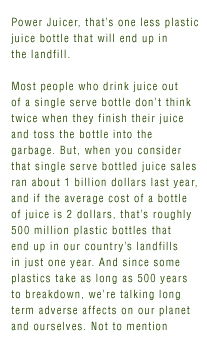Rome did not end in a day or a week or a year or even a decade. Still the past few day’s meditations have been CAN we live off the Earth peacefully? Today’s is better thought of as WILL we HAVE to life off the Earth peacefully?
http://www.marketwatch.com/story/story/print?guid=47729BA0-933E-4299-92CC-EB41EEE671D2
Paul B. Farrell

Oct. 20, 2009, 1:38 p.m. EDT
Death of ‘Soul of Capitalism:’ Bogle, Faber, Moore
20 reasons America has lost its soul and collapse is inevitable
By Paul B. Farrell, MarketWatch
ARROYO GRANDE, Calif. (MarketWatch) — Jack Bogle published “The Battle for the Soul of Capitalism” four years ago. The battle’s over. The sequel should be titled: “Capitalism Died a Lost Soul.” Worse, we’ve lost “America’s Soul.” And worldwide the consequences will be catastrophic.
That’s why a man like Hong Kong’s contrarian economist Marc Faber warns in his Doom, Boom & Gloom Report: “The future will be a total disaster, with a collapse of our capitalistic system as we know it today.”
No, not just another meltdown, another bear market recession like the one recently triggered by Wall Street’s “too-greedy-to-fail” banks. Faber is warning that the entire system of capitalism will collapse. Get it? The engine driving the great “American Economic Empire” for 233 years will collapse, a total disaster, a destiny we created.OK, deny it. But I’ll bet you have a nagging feeling maybe he’s right, the end may be near. I have for a long time: I wrote a column back in 1997: “Battling for the Soul of Wall Street.” My interest in “The Soul” — what Jung called the “collective unconscious” — dates back to my Ph.D. dissertation: “Modern Man in Search of His Soul,” a title borrowed from Jung’s 1933 book, “Modern Man in Search of a Soul.” This battle has been on my mind since my days at Morgan Stanley 30 years ago, witnessing the decline.
Has capitalism lost its soul? Guys like Bogle and Faber sense it. Read more about the soul in physicist Gary Zukav’s “The Seat of the Soul,” Thomas Moore’s “Care of the Soul” and sacred texts.
But for Wall Street and American capitalism, use your gut. You know something’s very wrong: A year ago “too-greedy-to-fail” banks were insolvent, in a near-death experience. Now, magically they’re back to business as usual, arrogant, pocketing outrageous bonuses while Main Street sacrifices, and unemployment and foreclosures continue rising as tight credit, inflation and skyrocketing Federal debt are killing taxpayers.
Yes, Wall Street has lost its moral compass. They created the mess, now, like vultures, they’re capitalizing on the carcass. They have lost all sense of fiduciary duty, ethical responsibility and public obligation.
Here are the Top 20 reasons American capitalism has lost its soul:
1. Collapse is now inevitable
Capitalism has been the engine driving America and the global economies for over two centuries. Faber predicts its collapse will trigger global “wars, massive government-debt defaults, and the impoverishment of large segments of Western society.” Faber knows that capitalism is not working, capitalism has peaked, and the collapse of capitalism is “inevitable.”
When? He hesitates: “But what I don’t know is whether this final collapse, which is inevitable, will occur tomorrow, or in five or 10 years, and whether it will occur with the Dow at 100,000 and gold at $50,000 per ounce or even confiscated, or with the Dow at 3,000 and gold at $1,000.” But the end is inevitable, a historical imperative.
2. Nobody’s planning for a ‘Black Swan’
While the timing may be uncertain, the trigger is certain. Societies collapse because they fail to plan ahead, cannot act fast enough when a catastrophic crisis hits. Think “Black Swan” and read evolutionary biologist Jared Diamond’s “Collapse: How Societies Choose to Fail or Succeed.”
A crisis hits. We act surprised. Shouldn’t. But it’s too late: “Civilizations share a sharp curve of decline. Indeed, a society’s demise may begin only a decade or two after it reaches its peak population, wealth and power.”
Warnings are everywhere. Why not prepare? Why sabotage our power, our future? Why set up an entire nation to fail? Diamond says: Unfortunately “one of the choices has depended on the courage to practice long-term thinking, and to make bold, courageous, anticipatory decisions at a time when problems have become perceptible but before they reach crisis proportions.”
Sound familiar? “This type of decision-making is the opposite of the short-term reactive decision-making that too often characterizes our elected politicians,” thus setting up the “inevitable” collapse. Remember, Greenspan, Bernanke, Bush, Paulson all missed the 2007-8 meltdown: It will happen again, in a bigger crisis.
3. Wall Street sacked Washington
Bogle warned of a growing three-part threat — a “happy conspiracy” — in “The Battle for the Soul of Capitalism:” “The business and ethical standards of corporate America, of investment America, and of mutual fund America have been gravely compromised.”
But since his book, “Wall Street America” went over to the dark side, got mega-greedy and took control of “Washington America.” Their spoils of war included bailouts, bankruptcies, stimulus, nationalizations and $23.7 trillion new debt off-loaded to the Treasury, Fed and American people.
Who’s in power? Irrelevant. The “happy conspiracy” controls both parties, writes the laws to suit its needs, with absolute control of America’s fiscal and monetary policies. Sorry Jack, but the “Battle for the Soul of Capitalism” really was lost.
4. When greed was legalized
Go see Michael Moore’s documentary, “Capitalism: A Love Story.” “Disaster Capitalism” author Naomi Klein recently interviewed Moore in The Nation magazine: “Capitalism is the legalization of this greed. Greed has been with human beings forever. We have a number of things in our species that you would call the dark side, and greed is one of them. If you don’t put certain structures in place or restrictions on those parts of our being that come from that dark place, then it gets out of control.”
Greed’s OK, within limits, like the 10 Commandments. Yes, the soul can thrive around greed, if there are structures and restrictions to keep it from going out of control. But Moore warns: “Capitalism does the opposite of that. It not only doesn’t really put any structure or restrictions on it. It encourages it, it rewards” greed, creating bigger, more frequent bubble/bust cycles.
It happens because capitalism is now in “the hands of people whose only concern is their fiduciary responsibility to their shareholders or to their own pockets.” Yes, greed was legalized in America, with Wall Street running Washington.
5. Triggering the end of our ‘life cycle’
Like Diamond, Faber also sees the historical imperative: “Every successful society” grows “out of some kind of challenge.” Today, the “life cycle” of capitalism is on the decline.
He asks himself: “How are you so sure about this final collapse?” The answer: “Of all the questions I have about the future, this is the easiest one to answer. Once a society becomes successful it becomes arrogant, righteous, overconfident, corrupt, and decadent … overspends … costly wars … wealth inequity and social tensions increase; and society enters a secular decline.” Success makes us our own worst enemy.
Quoting 18th century Scottish historian Alexander Fraser Tytler: “The average life span of the world’s greatest civilizations has been 200 years” progressing from “bondage to spiritual faith … to great courage … to liberty … to abundance … to selfishness … to complacency … to apathy … to dependence and … back into bondage!”
Where is America in the cycle? “It is most unlikely that Western societies, and especially the U.S., will be an exception to this typical ‘society cycle.’ … The U.S. is somewhere between the phase where it moves ‘from complacency to apathy’ and ‘from apathy to dependence.'”
In short, America is a grumpy old man with hardening of the arteries. Our capitalism is near the tipping point, unprepared for a catastrophe, set up for collapse and rapid decline.
15 more clues capitalism lost its soul … is a disaster waiting to happen
Much more evidence litters the battlefield:
- Wall Street wealth now calls the shots in Congress, the White House
- America’s top 1% own more than 90% of America’s wealth
- The average worker’s income has declined in three decades while CEO compensation exploded over ten times
- The Fed is now the ‘fourth branch of government’ operating autonomously, secretly printing money at will
- Since Goldman and Morgan became bank holding companies, all banks are back gambling with taxpayer bailout money plus retail customer deposits
- Bill Gross warns of a “new normal” with slow growth, low earnings and stock prices
- While the White House’s chief economist retorts with hype of a recovery unimpeded by the “new normal”
- Wall Street’s high-frequency junkies make billions trading zombie stocks like AIG, FNMA, FMAC that have no fundamental value beyond a Treasury guarantee
- 401(k)s have lost 26.7% of their value in the past decade
- Oil and energy costs will skyrocket
- Foreign nations and sovereign funds have started dumping dollars, signaling the end of the dollar as the world’s reserve currency
- In two years federal debt exploded from $11.2 to $23.7 trillion
- New financial reforms will do little to prevent the next meltdown
- The “forever war” between Western and Islamic fundamentalists will widen
- As will environmental threats and unfunded entitlements
“America Capitalism” is a “Lost Soul” … we’ve lost our moral compass … the coming collapse is the end of an “inevitable” historical cycle stalking all great empires to their graves. Downsize your lifestyle expectations, trust no one, not even media.
Faber is uncertain about timing, we are not. There is a high probability of a crisis and collapse by 2012. The “Great Depression 2” is dead ahead. Unfortunately, there’s absolutely nothing you can do to hide from this unfolding reality or prevent the rush of the historical imperative.
:}
I am just shaking in my boots.
Oh, and if you are interested in hiring a green consultant…I hear these guys are pretty good.
http://www.greenappleconsult.com/
:}



 Welcome to our free online resource for off-grid living.
Welcome to our free online resource for off-grid living.

 In the summer of 1980, my wife, three-month old son and I moved “off-grid”. We loved living in San Francisco but wanted to live a simpler, more independent lifestyle, and so we bought a small cabin with land on a rural island in the Pacific Northwest. Since there were no services to the island, our home had no electricity. Residents of the island had to create their own electricity or do without.
In the summer of 1980, my wife, three-month old son and I moved “off-grid”. We loved living in San Francisco but wanted to live a simpler, more independent lifestyle, and so we bought a small cabin with land on a rural island in the Pacific Northwest. Since there were no services to the island, our home had no electricity. Residents of the island had to create their own electricity or do without.






